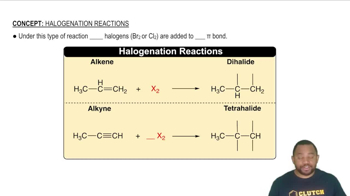Here are the essential concepts you must grasp in order to answer the question correctly.
Group 7A Elements (Halogens)
Group 7A, also known as the halogens, includes elements like fluorine, chlorine, bromine, iodine, and astatine. These elements are known for their high reactivity due to their tendency to gain one electron to achieve a stable octet configuration. The reactivity of halogens is influenced by their electronegativity and the ability to attract electrons.
Recommended video:
Atomic Size and Shielding Effect
As you move down Group 7A, the atomic size increases due to the addition of electron shells. This increase in size leads to a greater distance between the nucleus and the outermost electrons, which reduces the effective nuclear charge experienced by these electrons. Additionally, the shielding effect from inner electrons further diminishes the nucleus's ability to attract additional electrons, thus decreasing reactivity.
Recommended video:
Electronegativity Trends
Electronegativity is a measure of an atom's ability to attract and hold onto electrons. In Group 7A, electronegativity decreases as you move down the group. This decrease means that larger atoms are less effective at attracting electrons, which contributes to the overall decrease in reactivity of halogens from top to bottom, as their ability to gain an electron diminishes.
Recommended video:
 Verified step by step guidance
Verified step by step guidance

